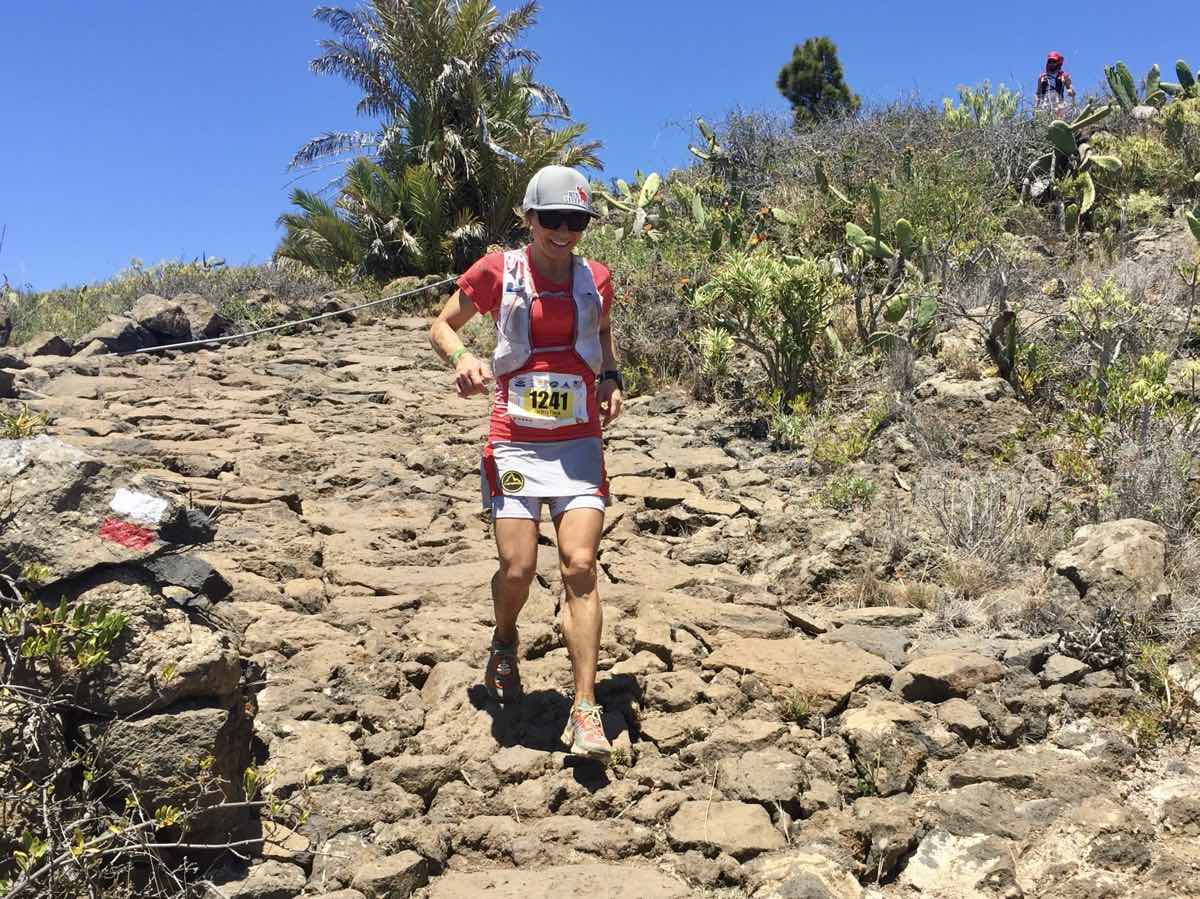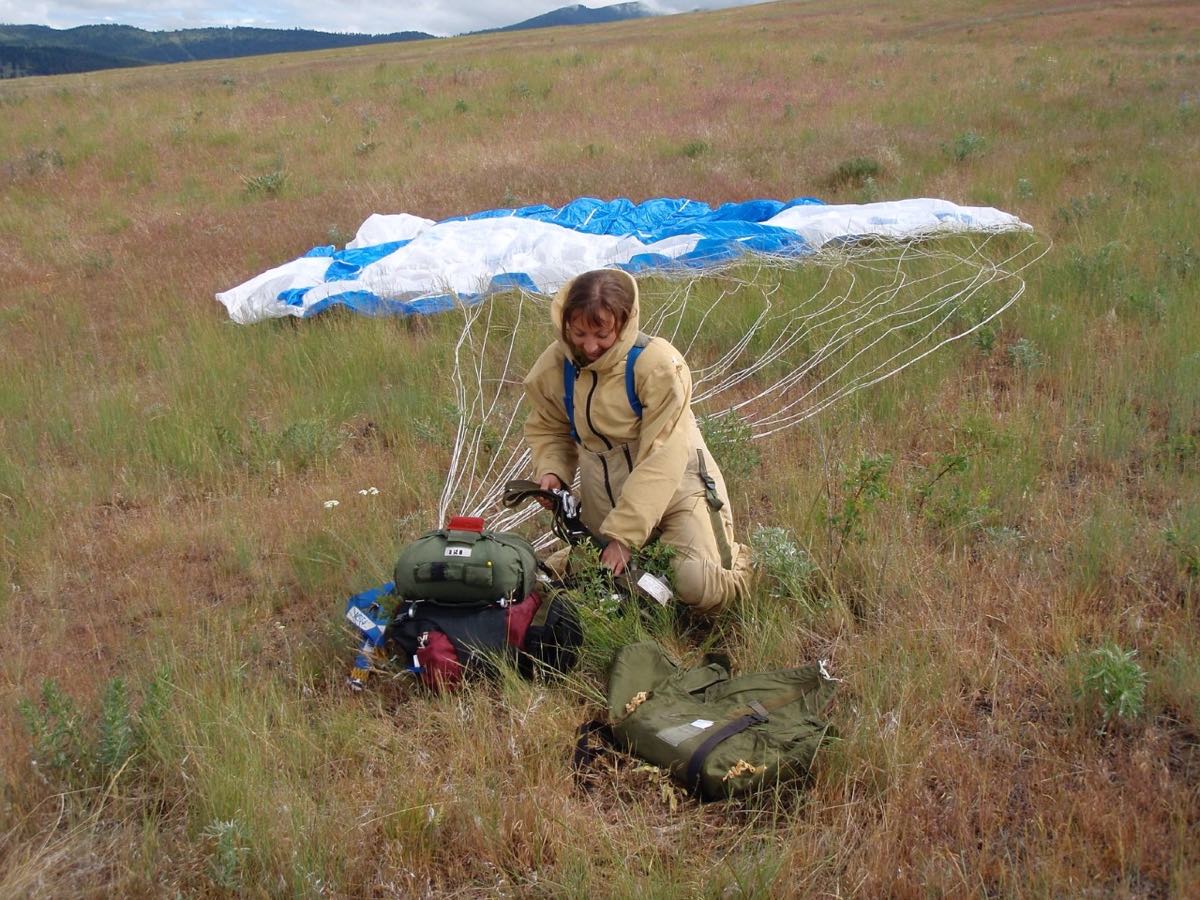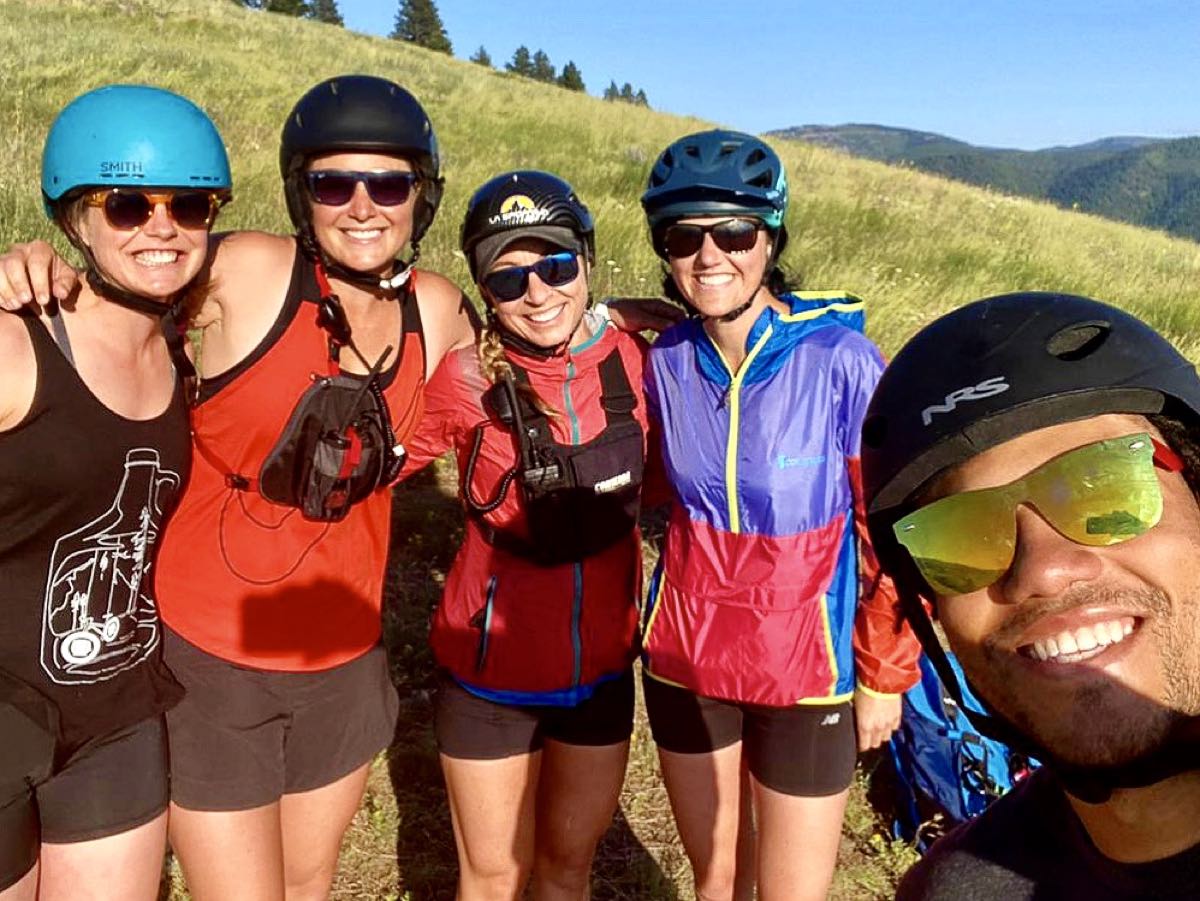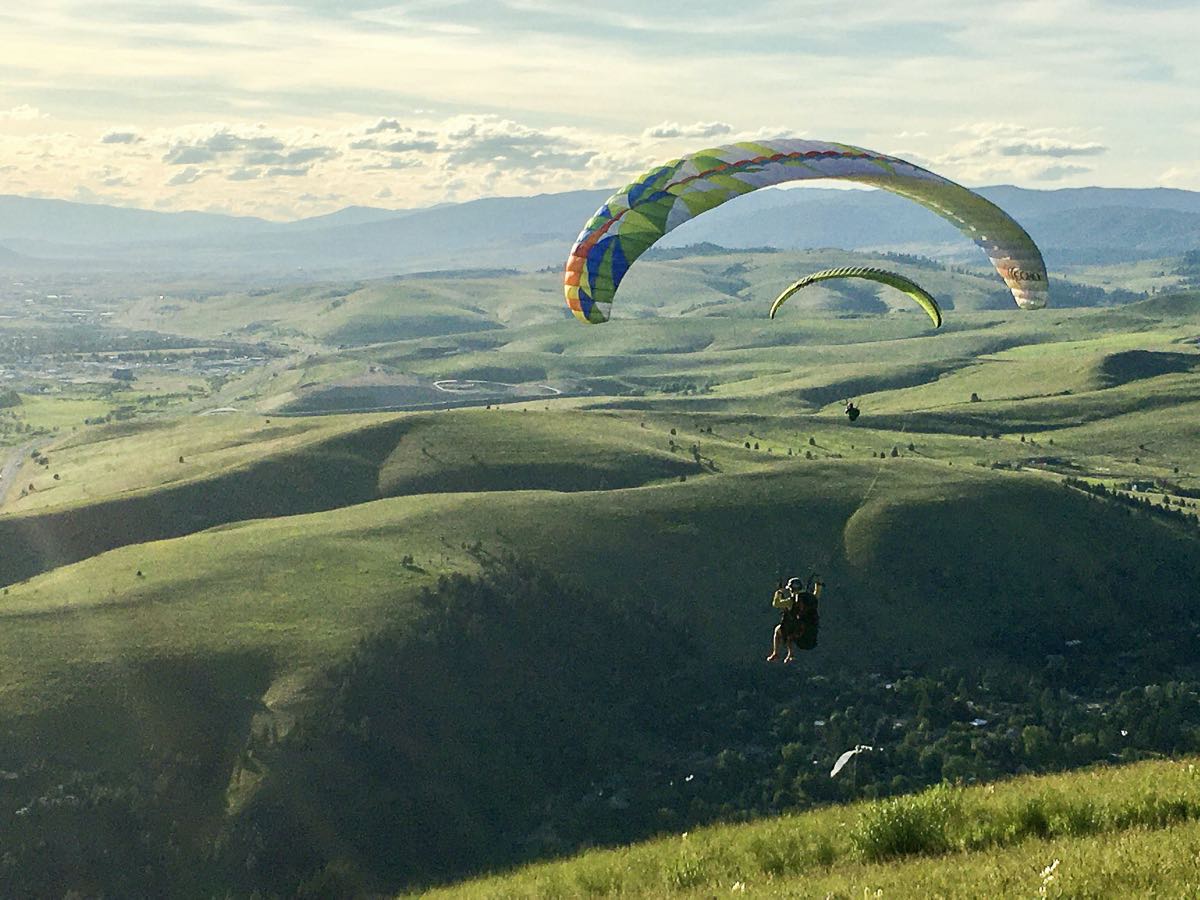
Get your tickets for the Trail Running Film Fest’s virtual year-end show now!
Runners wake up early, but dang, Kristina Pattison was texting me at 4:57 a.m. to reschedule our interview. “Conditions are going to be prime at 11 a.m. now, a long drought from flying!” her message read. I didn’t want to get in the way of that, and so we rushed our chat in after a morning run, but before she headed up a mountain to paraglide.
Pattison, 40 years old and living in Missoula, Montana, is a bit of an outdoors badass, though she insists otherwise. She was 16th at the Transvulcania Ultramarathon in 2019, 10th in 2017, and sixth in 2015, but before all of that she was a smokejumper, and I’ve been smokejump-curious ever since 1998 when Howie Long starred in “Firestorm.”
“I was living in Mammoth Lakes, California, and on the mountain about 100 days per year snowboarding. We were winter people and I needed a summer gig,” she explained of the initial attraction to wildland firefighting. Pattison and her husband met in Mammoth doing fire work, and later moved to Montana. She spent a decade in wildland firefighting, but in Montana, Pattison went next-level to smokejumping and spent three years from 2009 to 2011 parachuting into forest fires. Her husband Andrew still does it.
“At the time, there were less than 150 women smokejumpers. The first fire jump was in the 1940s and women weren’t allowed to do it until around 1980. So in that first 75 years, there were only about 150 women and just one woman for every 20 men. There were five people in my rookie class and I was the only woman. I don’t know if those numbers have changed much since 2011,” Pattison explained. “Certainly strength and conditioning has changed a lot though, and women have taken more ownership of what they’re capable of.”
“I really worked all over the western U.S., especially when I was with the Helena Hotshots, sometimes rappelling out of helicopters. Jumping from fire to fire, there’s such a strong camaraderie between crews. I had to work really, really hard at it. For smokejumping, you have to weigh 120 pounds. I had to put on 15 pounds of muscle at first, and then you have to be able to carry a 110-pound pack. It’s really physically demanding, it’s hard on your body. You jump with 80 pounds of gear and those landings can get pretty rowdy,” she said with an emphasis on the rowdy. “You’re landing on logs, there’s cliffs, mountains, and then you have to hike into the fire. You have to stay physically fit and that took up a lot of my life. I was basically working all winter to be in shape for it.”

Members of the 2009 smokejumper rookie class with their trainers about to play a joke on them. Kristina is in the middle. Photo: Brandon Sheehan
In 2011, then, Pattison left firefighting and smokejumping and earned her doctorate in physical therapy. A trio of acronyms after her name identify two other certifications too. The education built on her undergraduate study in exercise science, and the interest fills a gap too. “I work with a lot of runners, athletes, even smokejumpers,” Pattison shared. She’s been a physical therapist in Missoula for six years now.
And Pattison still jumps too, just a little differently. “Yeah, when I say ‘flying’ these days, I mean paragliding. We’re waiting out some gusty winds, but have a big group going up. Missoula’s a pretty good place for it, there are two to three launches close to town. My husband’s friend started a school and we had friends doing it, so we had that community. It’s a really good sport. It’s a hard climb up with a lot of gear on your back, and then it’s a peaceful ride down. It’s really just a different view of the mountains, a different way to explore the mountains.”
The jumps in Missoula are from 4,000 to 5,000 feet above sea level, and about 2,000 feet above the valley. “It’s a five- to 10-minute ride for me as a new pilot, and someone more experienced can go for hours. There’s even hike-and-fly competitions. There are a lot of different facets to it,” Pattison said, and then explained the learning process. “You don’t have to start with a tandem jump. You take a paraglider out and learn to handle it on the ground, practice with a light breeze and kite the glider at a park. Then you can go to a small hill, just enough to get a little lift. After a while, you’ll go up on a mountain and the whole time they can talk to you on a radio, tell you when to turn, how to set up for your landing. There’s a certification process too, there’s four levels.” Pattison’s husband is still an active skydiver too, but she shrugs it off. “I think I prefer the human-powered flight.”
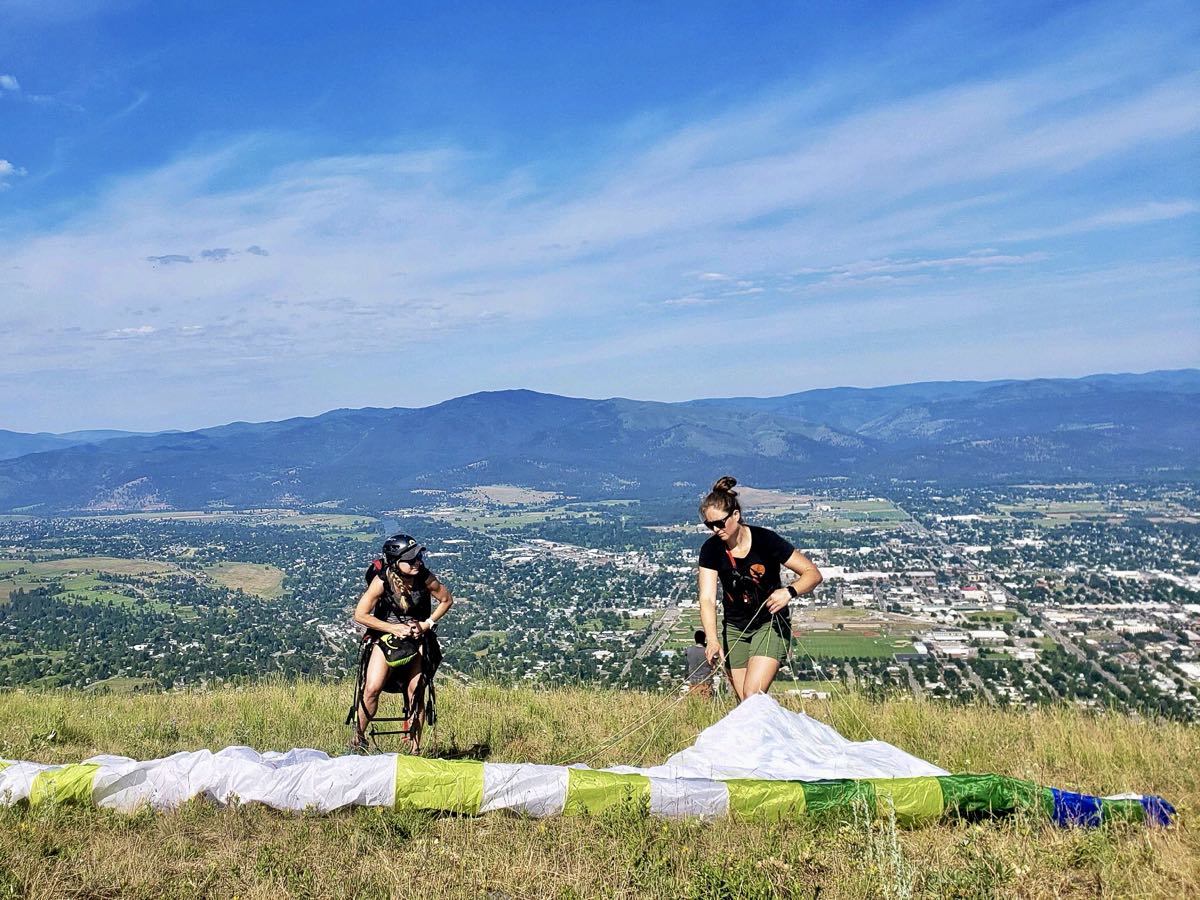
Kristina (left) doing pre-paragliding flight preparation with instructor Jen Bedell above Missoula, Montana. Photo: Lina Montopoli
Living in Colorado’s Front Range, I always feel like Montana and Alaska are especially wild, and Pattison helps to break down the immediate differences. “The Colorado mountains have a lot easier access. Like the Mission Mountains [in northwestern Montana] are in tribal wilderness and a lot of the mountains are just really remote, there’s not routes, or at least not named or established routes. There’s a shorter weather window here too. There’s a lot of bear and cat activity, just north of us there’s a lot of grizzly activity. That adds a lot of complexity, and I run by myself almost all the time. I feel vulnerable, and you’ve got to be smart about long runs. I want to be in that wilderness, but you have to be smart about it,” Pattison said.
Pattison’s right about the weather window, but she has some plans for the coming winter too. “I was a snowboarder in Mammoth, I didn’t learn to ski. I have a one-track mind I guess, but you can ski launch and paraglide, that’s cool to me. I’m excited about that. Paragliding’s such a cool, cool sport. That’s the coolest thing I have going on.”
Call for Comments
Share your stories of running, racing, or gliding through the air with Kristina Pattison in the comments section!
